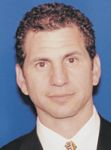- General Dermatology
- Eczema
- Chronic Hand Eczema
- Alopecia
- Aesthetics
- Vitiligo
- COVID-19
- Actinic Keratosis
- Precision Medicine and Biologics
- Rare Disease
- Wound Care
- Rosacea
- Psoriasis
- Psoriatic Arthritis
- Atopic Dermatitis
- Melasma
- NP and PA
- Skin Cancer
- Hidradenitis Suppurativa
- Drug Watch
- Pigmentary Disorders
- Acne
- Pediatric Dermatology
- Practice Management
- Prurigo Nodularis
Article
Incisionless technique corrects wrinkles, lines, scars
New Orleans - A new procedure releases skin attachments of deep wrinkles, scars and folds notoriously difficult to correct with traditional techniques, says to Miles H. Graivier, M.D. The subcision or release of skin attachments is performed with a braided wire attached to two long, straight needles (Nutec International) and takes little time for a plastic surgeon to learn, Dr. Graivier adds. He presented this technique at the Aesthetic Meeting 2005 sponsored by the American Society of Aesthetic Plastic Surgery (ASAPS), here.

Needle and thread
Dr. Graivier, a board-certified plastic surgeon with a private practice in Roswell, Ga., says to use this technique, the wire follows the needle under the skin and comes back out the same puncture hole in which the needle is threaded. He says it is a "quick, easy procedure" that can be done under local anesthesia.
"Up until now, when we've treated facial lines, depressions, folds and depressed scars, we've had to use combinations of injectable fillers (synthetic and natural) or implantable tissue grafts. But the problem with grade 4 or grade 5 nasolabial folds, for example, is that without adequate release, we fill around the skin attachments. The wire technique allows us to release these attachments. In some patients, I don't even use a filler underneath."
Radial lip lines, brow lines
Dr. Graivier uses the technique to treat radial lip lines.
"I've totally released radial lip lines with the wire, and I've gotten very nice results by combining the technique with laser resurfacing," he says. "But I need to be conservative in filling the area so the lip does not appear longer than it is. I don't overcorrect, even with fat injections."
The technique can also improve areas harder to address surgically, such as transverse brow lines, in which the surgeon can release the deep transverse lines at the same time as performing the brow lift, Dr. Graivier says.
Acne scars
Acne scars, traditionally difficult to subcise, can be released individually or under a larger area, such as the cheek.
"The key to the technique is raising the base of the defect and releasing the attachments from the deeper planes," he says. "Reattachment will eventually occur, but the lines or depressions are lessened. The procedure leaves little puncture marks where the instrument was placed and takes approximately 15 minutes to complete, depending on the number of areas released."
Fillers not always needed
Dr. Graivier is currently developing criteria for deciding whether patients actually need fillers after their attachments are freed.
"Patients may not need a filler because bleeding and fibrosis occur and help to prevent reattachment," he says. "I've been very pleased with the results with patients who have not gotten a filler."
In other patients, Dr. Graivier has placed fat, Radiesse (BioForm Inc.), and, in two patients with retracted breast scars, AlloDerm sheets (LifeCell Corporation).
Adverse effects manageable
According to Dr. Graivier, edema and bruising at the treated site may persist for three to 14 days.
"The procedure requires local anesthetic with epinephrine," he says. "After the subcision is done, I recommend holding pressure on the area for a minute to stop the bleeding. Ice is applied intermittently over the first 24 hours to minimize swelling. In the 20 patients I've treated, one had a small hematoma and another had a localized infection at the puncture site. Both patients responded to local methods of correction."





